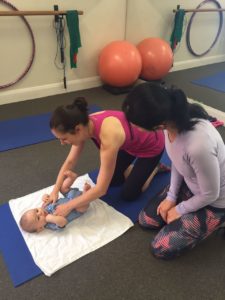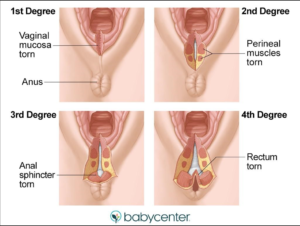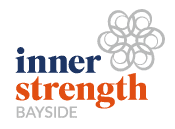Post-natal, pandemic and perineal tears.
 If you are a new mum and you have endured pregnancy, childbirth and postpartum during this pandemic then I want to reach out to you and give you a big hug. Dear Mumma, you made it through and be proud of yourself! And if you are pregnant and the pandemic is still relevant, hang in there.
If you are a new mum and you have endured pregnancy, childbirth and postpartum during this pandemic then I want to reach out to you and give you a big hug. Dear Mumma, you made it through and be proud of yourself! And if you are pregnant and the pandemic is still relevant, hang in there.
Pregnancy, although a beautiful experience is challenging enough and when you add a pandemic in the mix there are all kinds of disappointments. Virtual baby showers, online shopping, appointments without the partner and just general lack of social life. One might thank the lockdown in the first few days without any visitors but slowly the loneliness creeps.
The thing about pregnancy is you might plan everything to the T till the day arrives but nothing prepares you for what happens after. I was prepared for a c section, what I was not prepared for was a perineal tear. I had a 12 hour labor and grade 3b perineal tear. It is considered quite a significant tear and because of the pandemic I had most of my appointments online. Imagine breastfeeding every 2 hours, sometimes hourly and sitting on those stitches and not being able to seek one on one help. It takes toll on an already fragile mind. So, if you are a new mum, due for delivery or just curious about these tears lets simplify them.
A perineal tear is simply the tear of the perineum or the ‘birthing area’ and depending on the extent of the tear it is divided into grade. The perineum is the area between your vagina and anus. During childbirth the perineum can tear. From a shallow tear to the skin of the perineum to the tear extending upto the anus , these tears are graded into 4 types. Sometimes a cut is deliberately made to aid the process of delivery and avoid further tear. This cut is called a episiotomy.
Can you reduce your risk of tearing?
The good news is, Yes you can. 
Before the delivery:
- Massaging your perineum during late pregnancy may reduce your risk of needing an episiotomy for some first time mothers.
- Doing pelvic floor muscle exercises in combination with massaging your perineum may reduce your risk of tearing.
During labour and birth, the following things can reduce you chance of tearing:
- Lying on your side, kneeling, standing or being on your hands and knees when you give birth
- Avoiding long stretches of time squatting, sitting, or using a birth stool when you are pushing
- Having a midwife hold a warm, wet washcloth (compress) on your perineum while you are pushing
- Pushing in a slow and controlled way during the final stage of birth. Listening to your midwife and/or doctor will help you with this
- Having a midwife massage your perineum in the final stages of labour What happens if you need stitches
After the tear and stitches:
- Rest and lie on your side as much as you can.
- Keep the tear as clean and dry as possible by changing pads frequently, showering at least daily and patting the area dry. This helps to prevent infection
- Avoid positions and activities that place pressure on the muscles or restrict blood flow to the area (e.g. avoid sit ups, lifting, and high impact exercise)
- Start gentle pelvic floor muscle exercises 2 to 3 days after you have your baby as pain allows. Gentle squeezes of the pelvic floor with your hip and knees bent while you lie down on your back in your bed.
The most important thing is to maintain the integrity of the stitches during toileting activities by doing the following:
- Sit on the toilet and lean forward with your elbows slightly bent and hands resting on your knees.
- Use a foot stool or lift your heels up so that your knees are above your hips.
- Relax your stomach and breathe normally.
- Take your time to empty your bladder and bowel. Avoid pushing or straining. You can support the area with your hand and a pad to lessen stretching and pain.
- To prevent infection, wipe front to back with soft toilet paper or baby wipes. Wash and pat dry the area after using the toilet.
While the stitches heal and the pain medications do their thing you can help the pain by doing the following:
- Rest and lie on your side as much as you can
- Put ice wrapped in a cloth on your tear for 10–20 minutes. Do this as often as you want to over the first few days
- If you need to cough, sneeze, blow your nose or empty your bowels, you might like to support your perineum with your hand or a cushion to help prevent stretching
- Keep bowel motions soft by drinking at least 2 litres of fluid a day, eating fruits and vegetables often, and taking laxatives if prescribed
- Take pain relief medication such as paracetamol or ibuprofen. Codeine and medications that contain codeine are not recommended if you are breastfeeding. They can also cause constipation and make it more painful for you to have a bowel movement.
Normally the stitches fall out and the perineum has a very rich blood supply so healing is fast so the area is almost 99.99% like before. Still, any soft tissue injury takes 6-8 weeks to heal so stitches or not let your ‘birthing area’ rest after the herculin work it has just performed.
You should contact your health care provider or local hospital if:
- You have a temperature
- Your stitches become more painful, swollen or smelly
- Sex is painful for you (Please wait for a green signal from the GP and your pelvic floor physio to resume intercourse)
Post the 8-week mark as the pelvic floor continues to heal keep an eye out for leaking, air escaping from the backside, not being able to control bowel and bladder activity and make sure you see your pelvic floor physio. Although a regular physio can help, a pelvic floor physio will specifically tailor exercises after a detailed examination of your pelvis. Unfortunately, due to the pandemic one on one appointments have been scarce, a phone conversation with your physio will help them decide if its urgent.
And most importantly, treat yourself well. Find yourself a good mother’s group, a good GP, a good physiotherapist and a good mental health expert. Because although the pandemic and post-natal world may make you feel that you are alone, believe me you are not!
Written by Urvi Shelar, Physiotherapist.


